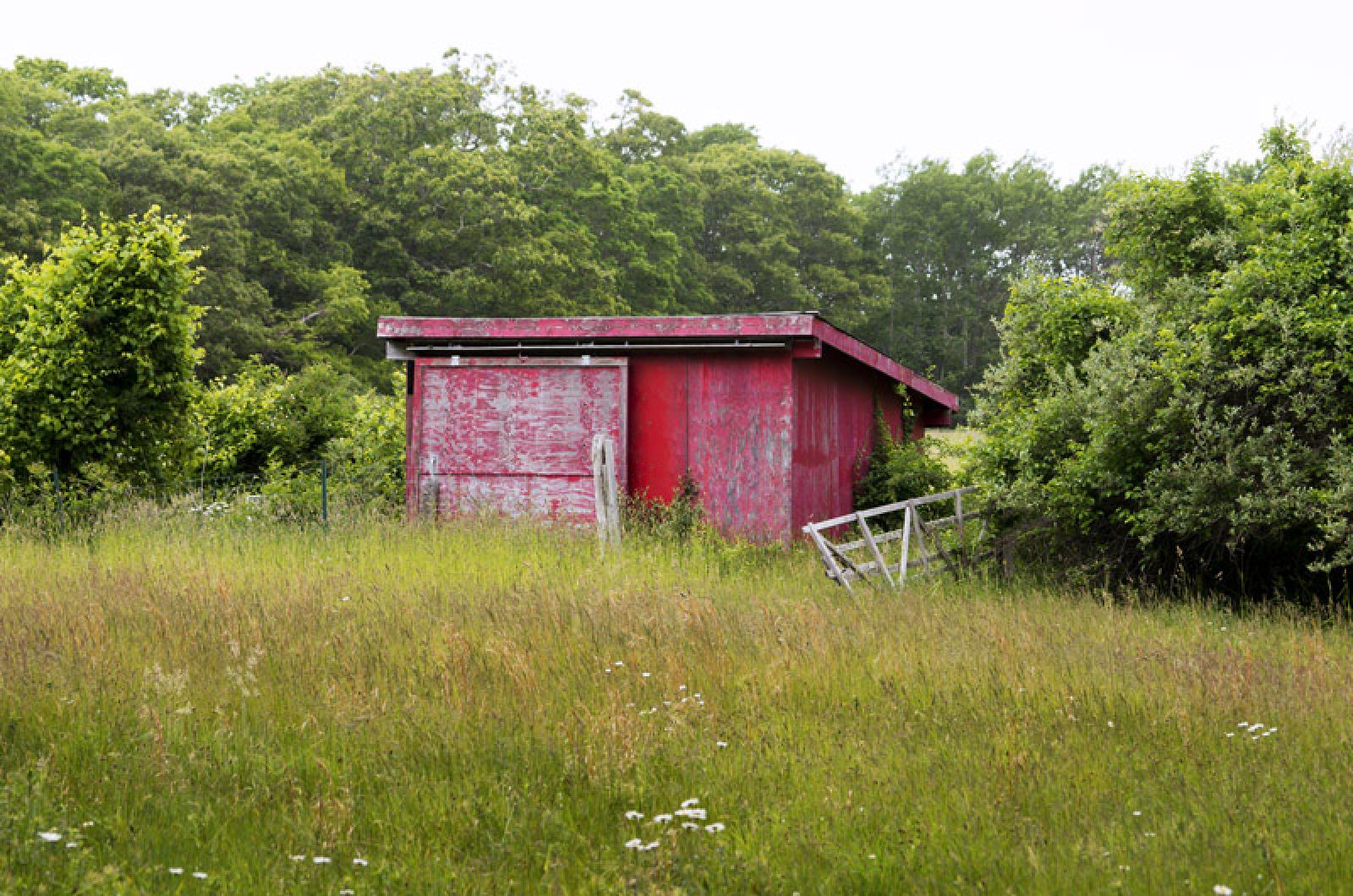From the Vineyard Gazette edition of June 14, 1977 by Joseph Chase Allen:
The glimpses that are available today of areas over which the walker of years ago used to travel with freedom and ease of movement, walking on pasture land which had been grazed to the smoothness of a lawn, disclose little or nothing of the land itself, but only the thick and growth of trees, beneath which briars and underbrush cover the sward. In brief, the Island, as it once laid, has been reclaimed by nature which has destroyed or concealed the works of previous generations in many places.
Islanders, the year-round inhabitants and summer visitors alike of 65 to 70 years ago, all possessed a love for scenery, and the feeling was manifested especially in summer, and to some degree the year around. In those days when the majority of hilltops were bare and the slopes below were sufficiently clear as to invite walking, it was a common sight, on a Sunday afternoon in summer, to see groups of people on those hilltops and to catch the sparkle of reflection from their spyglasses or binoculars as the sun struck them. It has been many years since groups climbed to the ridges of hills that cross the Island from east to west, commanding views of both ocean and Sound, and the villages and farmsteads between, before woods cut off all such views and also covered the slopes that walking is difficult. It is no exaggeration to say that many of these highest hills are unknown today save for the few elderly persons who once climbed them. Now and then, through accident, someone finds himself upon a stately elevation from which by peering through the trees he can see the water, and he exclaims in astonishment.
The forest conceals other things. Population figures are alarming and also misleading, but all the evidence goes to show that the Island has been lived upon throughout the greater part of its area. Farms of varying sizes are located and traced by the surveyors, who also find the cellar holes of houses and farm buildings in every patch of wilderness. Even on the Great Plain, builders of the Island Airport found the cellar holes and dried up wells of settlers who attempted to establish themselves there and failed because frosts occurred on the plains in almost every month in the year. Elsewhere, nature was more kindly, and the old-timer knows all about this, for in youth, he walked the old fields, and ate the fruit which ripened in the abandoned orchards.
He remembers also, and with a pleasant nostalgia, that the grass all around the old homesite was kept as short and tender as the finest lawn by grazing sheep, and the turkeys, always walking sedately for miles in any direction from home.
The old-timer knows that Island population centers shifted, accounting for the abandonment of farms, and that it was possible to walk cross-lots from far down on the old Takemmy Trail to Menemsha Creek, as the crow flies, never taking a step on a public way unless merely to cross it. He fished in Harlock’s Pond as a boy. Old Professor Shaler never minded the boys who wandered over his broad holdings. He picked blueberries in the Pokeshite Place, and he explored the ancient Which House of Chilmark where traditionally no one could live because sand constantly sifting from the ceilings, and he discovered, with a shudder, that as he walked through the sagging, rotting structure, the sand still sifted down upon him.
But foremost in his memory are the trips on foot over the hills, across the swamps on ancient stepping stones, climbing old walls on the stone stiles built into them like a double flight of steps (are there any left?) and peering through the sheep-passes too low and narrow for cattle to pass but perfect for the sheep.
Here in such places were the kitchen middens where forgotten inhabitants threw away such items as could not be used for any purpose, and there were items tucked into crannies of the stone walls, secured against their falling out on the ground where persons or animals might step upon them and be injured. All along such a course there were things of interest and beauty, tiny glens where the wild flowers bloomed in profusion, sunny hillsides where the wild strawberries tuned the ground red and wild black raspberries bent the brier bushes with their weight. There were black pools in some of the brooks where spotted trout lay, and birds fluttered and chirped in every thicket.
But today much of this is buried in a green sea of briers and thorn bushes, overshadowed by the black oaks. The brooks are chocked with sedge and the rotting tree limbs and the old homesites can be located only after painful search and a forced passage through wild growth. There are few pastures and meadows save in rare instances, and the new houses which have replaced the old in many cases sit in tiny clearings which required the chopping of trees and the removal of stumps, all of which have grown during a lifetime.
Compiled by Hilary Wall
library@mvgazette.com




Comments (1)
Comments
Comment policy »